The United States is where the cloud first took shape. In Northern Virginia, a cluster of data centers grew into the world’s most important hub, setting the standard for how cloud regions are built everywhere else. Now, a new frontier is rising in Texas, powered by huge campuses, fresh energy deals, and a partnership between CoreWeave and Nvidia, a collaboration turning AI from research into real infrastructure at scale. Virginia and Texas together show that America is both the birthplace of the cloud and the stage for its reinvention in the AI era.
The Benchmark of U.S. Cloud Infrastructure: Northern Virginia
Northern Virginia is not just another cluster of data centers; it is the place where the cloud matured into a global industry. Known widely as Data Center Alley, the region grew out of its unique mix of early internet backbones, proximity to Washington D.C., and affordable land and power. What began in the 1990s as a favorable location for network carriers has since transformed into the world’s most concentrated hub of cloud infrastructure.
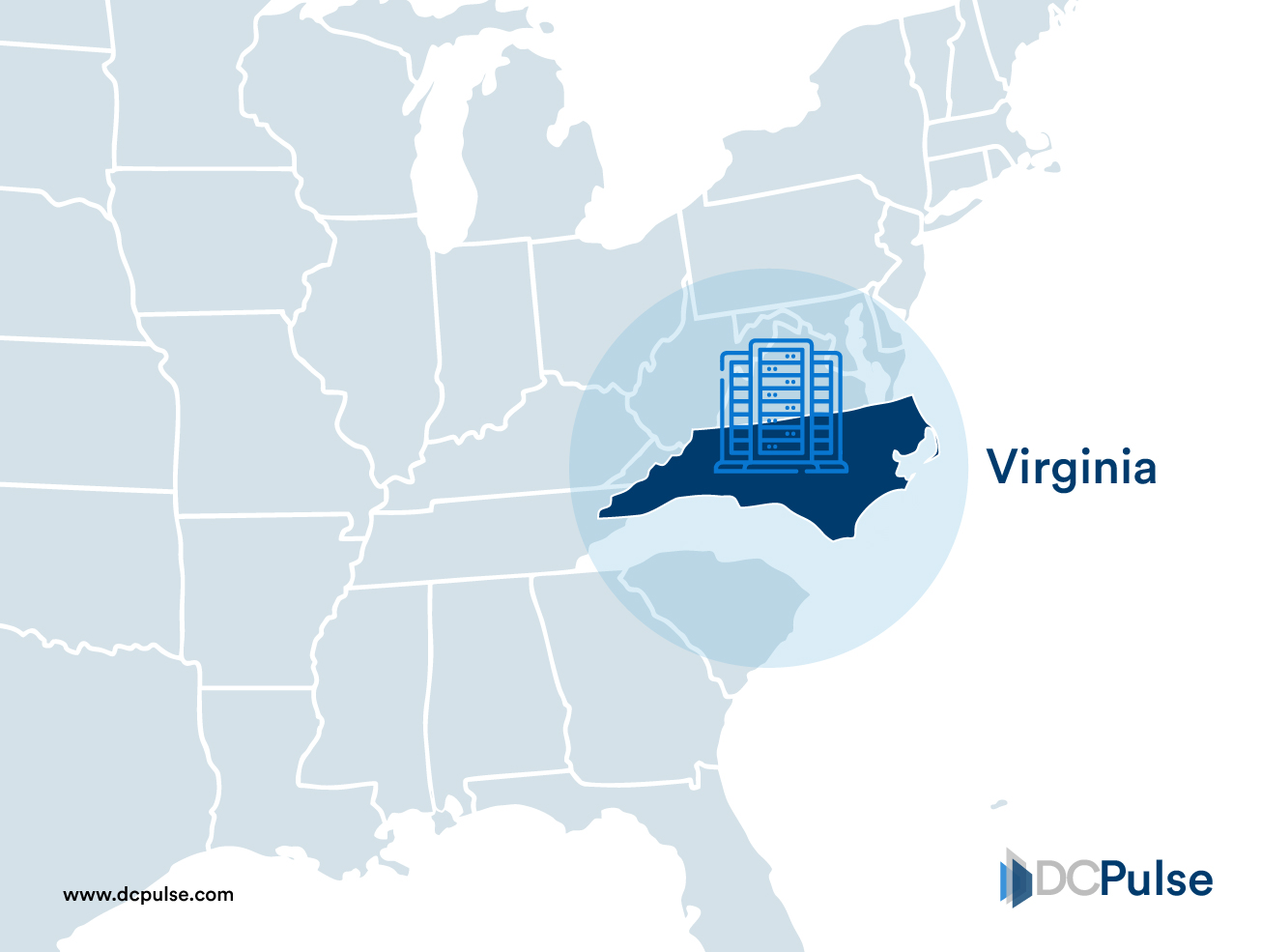
By the numbers, Northern Virginia is unmatched. The region hosts more than 35 distinct cloud availability zones across AWS, Microsoft Azure, Google Cloud, Oracle, and others, giving it a density no other market has achieved. Amazon’s US-EAST-1 region, based here, is the single most used cloud region in the world, underpinning everything from streaming services to global enterprises. Microsoft Azure’s East US and East US-2 regions are also anchored in Virginia, alongside Google Cloud’s US-EAST-4, Oracle’s Ashburn presence, and dozens of others.
Analysts estimate that Northern Virginia alone represents ~40% of U.S. data center capacity and continues to expand as AI workloads demand faster scaling. The area around Ashburn is now lined with hundreds of hyperscale and colocation facilities, led by providers like Equinix and Digital Realty, with new builds still breaking ground despite its already massive scale.
U.S. Cloud Regions by Data Center Inventory
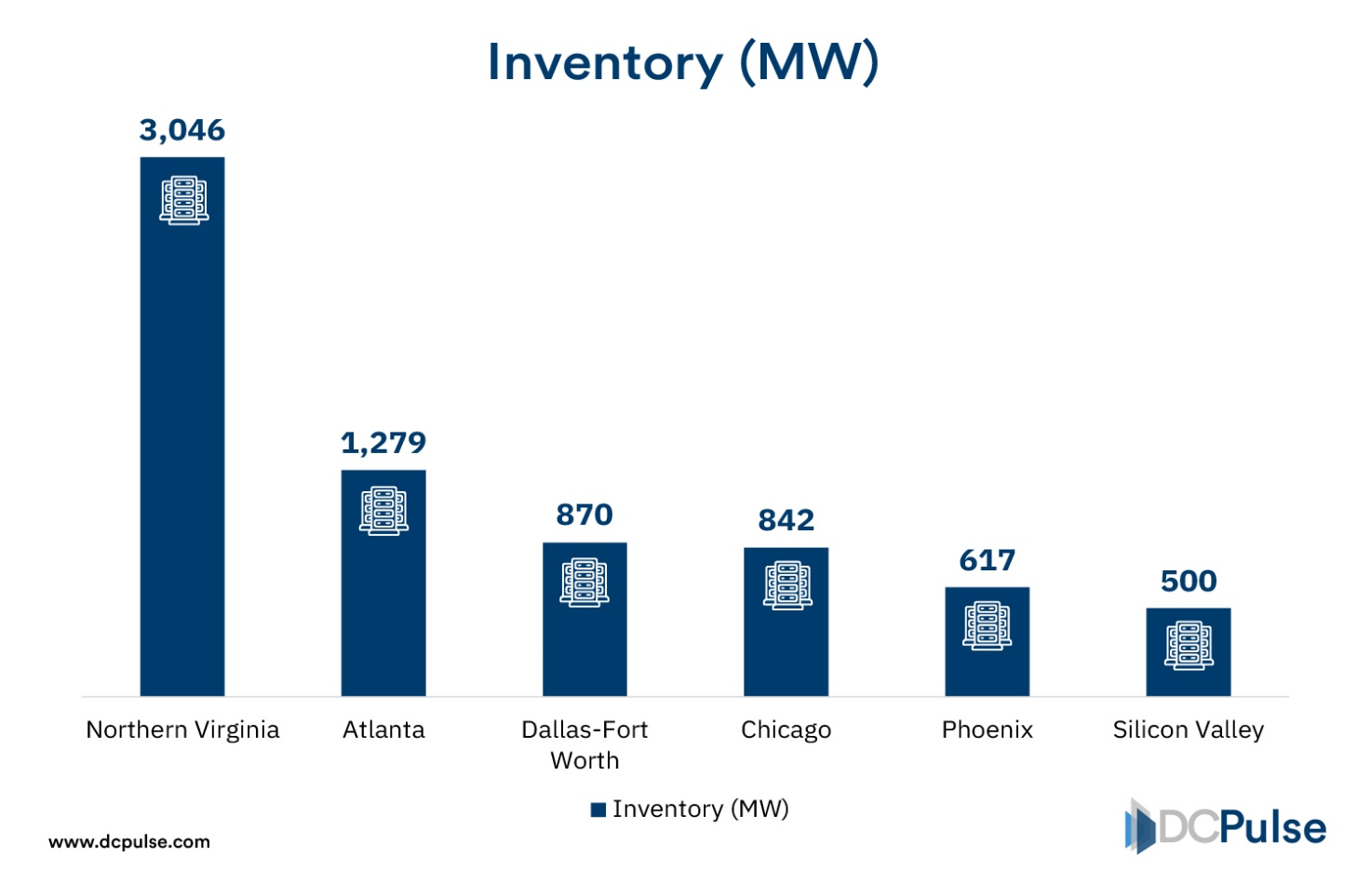
This density created the template for cloud regions worldwide. The way operators clustered availability zones, linked them with high-speed fiber, and layered hyperscale with colocation became the model replicated in Europe, Asia, and, more recently, in India. Even as new hubs like Texas emerge, Northern Virginia remains the benchmark for reliability, redundancy, and hyperscale growth at speed.
The New Frontier of AI-Optimized Cloud Infrastructure: Texas
While Northern Virginia set the template for cloud regions, Texas is emerging as the new frontier, shaped by the demands of artificial intelligence and hyperscale workloads. The state has become a magnet for massive data center campuses, attracting developers with abundant land, a deregulated energy market, and access to both natural gas and renewable power sources.
At the heart of this transformation is the CoreWeave-Nvidia partnership, a multi-billion-dollar collaboration designed to deliver GPU-backed infrastructure at unprecedented scale. Under the deal, Nvidia guarantees to invest USD 6.3 billion in capacity, enabling CoreWeave to deploy Thousands of GPUs optimized for AI workloads across multi-hundred-megawatt campuses.
The partnership combines financial backing, hardware integration, and operational expertise, allowing CoreWeave to offer AI-ready infrastructure that can support everything from large-scale model training to inference workloads.
Comparing U.S. Cloud Hubs: Northern Virginia vs. Texas AI Mega-Campuses
|
Metric |
Northern Virginia |
Texas Mega-Campuses |
|
Total Data Center Capacity (MW) |
~3,046 |
~1,200+ planned |
|
Cloud Providers |
AWS, Azure, GCP, Oracle |
CoreWeave–Nvidia, CyrusOne, Vantage, ECP |
|
Availability Zones / Regions |
35+ |
10+ (AI-focused) |
|
GPU Deployment |
Limited / standard HPC |
Thousands of high-performance GPUs |
|
Energy Strategy |
Grid-backed, some renewable |
On-site substations, microgrids, renewable integration |
|
Primary Workload |
General cloud, enterprise, web services |
AI training & inference, high-density compute |
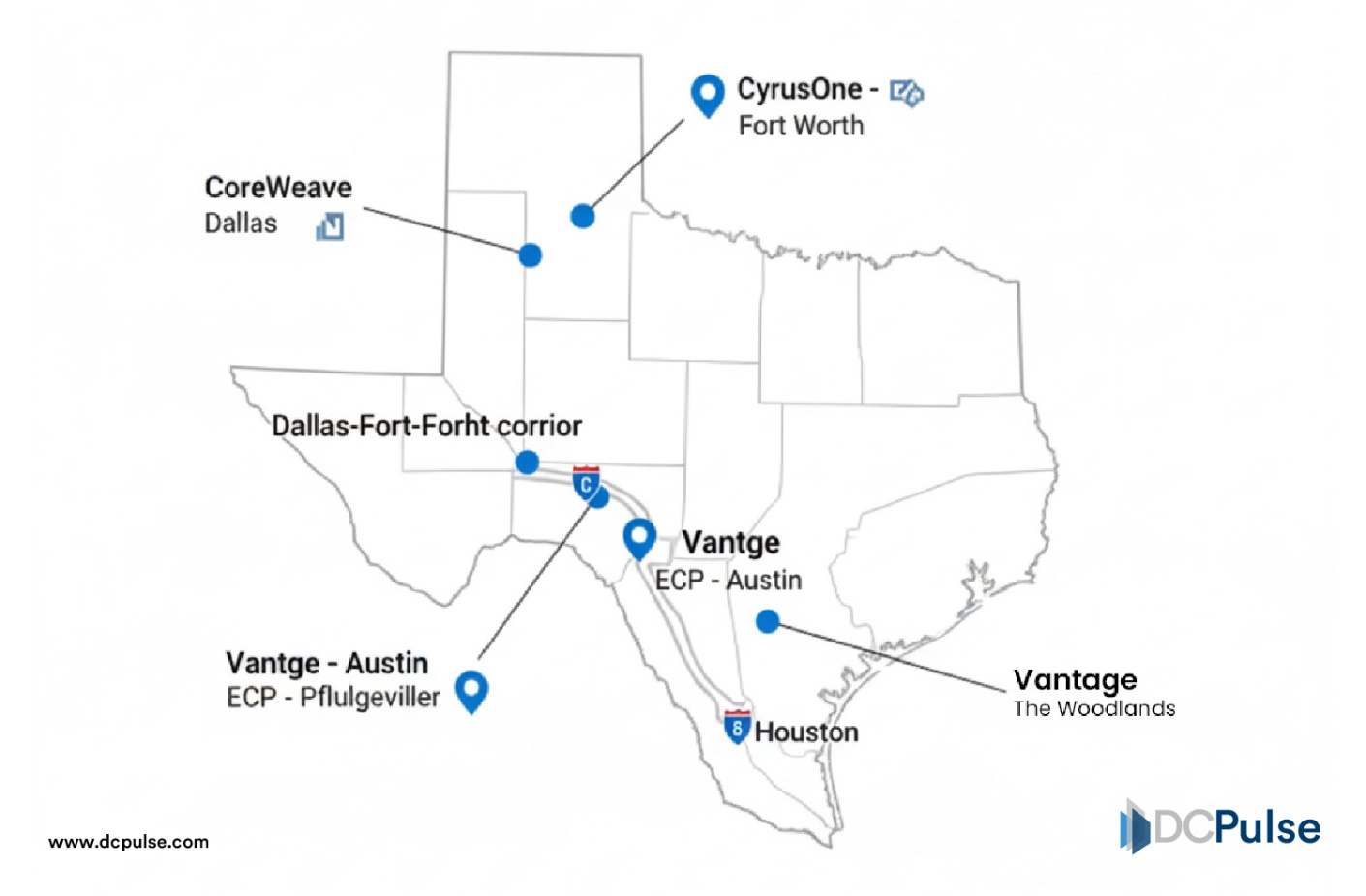
These campuses are not small clusters; they are engineered for high-density AI compute, with custom cooling solutions, on-site substations, and renewable energy integration through microgrids. Energy reliability is a priority, ensuring that GPU clusters can operate at full capacity even under extreme demand.
Texas’s appeal is also strategic. Unlike older, denser hubs like Northern Virginia, the state offers the space to build at scale without geographic constraints, enabling faster region deployment and experimentation with next-generation energy and cooling designs. Companies like CyrusOne, Vantage, and ECP-backed developments are already operational or underway, signaling that Texas is not just a satellite region; it is a next-generation hub defining AI-era cloud infrastructure.
Northern Virginia remains the foundational hub, but Texas shows how the country can reinvent its approach, combining finance, energy strategy, and technology partnerships to meet the next wave of AI-driven demand. Together, these regions illustrate the United States’ ability to maintain leadership in cloud infrastructure while adapting to the future of high-performance computing.
The Anatomy of U.S. Cloud Infrastructure: Virginia and Texas in Focus
The U.S. cloud market thrives not just because of individual regions, but due to an interconnected ecosystem of power, network, and compute. Northern Virginia and Texas exemplify two complementary approaches: the former as a dense, mature hub; the latter as a purpose-built frontier for AI workloads.
Northern Virginia owes its dominance to a dense fiber network linking Ashburn to Washington D.C., New York, and other major hubs, enabling low-latency connections across availability zones and cloud providers. Texas campuses, by contrast, are connected through newly laid fiber corridors capable of supporting multi-terabit AI workloads, ensuring resilience even under peak demand.
Energy infrastructure is equally critical. Northern Virginia relies primarily on grid-backed power, with renewable energy gradually supplementing traditional sources. Texas takes a different approach: high-density GPU clusters operate on on-site substations, microgrids, and integrated renewable energy, allowing AI workloads to run at full capacity while maintaining reliability and efficiency. These contrasting approaches illustrate a broader trend in U.S. cloud design: scalable, resilient, and increasingly sustainable infrastructure.
Energy Infrastructure: Virginia’s Grid-Backed Model vs. Texas Microgrid & Renewable Integration
|
Aspect |
Virginia (Grid-Backed) |
Texas (Microgrid/Renewable) |
|
Primary Power Source |
PJM grid (70% fossil/nuclear) |
Microgrids (50%+ renewables: solar/wind) |
|
Capacity Growth |
3 GW+ inventory; constrained by transmission |
2.4 GW+; 5 GW green hubs emerging |
|
Reliability |
High outage risk (400+ hrs/yr by 2030) |
Energy independence via batteries/gas |
|
Renewables % |
~20% (grid mix) |
40%+ (on-site solar/wind integration) |
|
Emissions Impact |
Highest U.S. DC CO₂ (~35% global DCs) |
Lower via PPAs; gas backups for peaks |
|
Innovation |
Smart grid upgrades, co-location pilots |
On-site plants, hydrogen-ready microgrids |
The U.S. colocation and hyperscale ecosystem further strengthens its infrastructure. Hyperscale campuses in both Virginia and Texas are complemented by colocation providers, creating dense interconnect hubs that accelerate deployment, reduce latency, and enable enterprise access to high-performance compute.
Companies such as Equinix, Digital Realty, CyrusOne, and Vantage populate these regions, forming a layered ecosystem that supports rapid scaling for AI workloads.
Today, the anatomy of U.S. cloud infrastructure demonstrates how geography, energy, network, and compute converge to support current and next-generation workloads. Northern Virginia continues to provide the backbone for enterprise operations, while Texas shows how the country is reinventing infrastructure to meet AI-era demands.
Together, they form a resilient, scalable, and high-performance network capable of sustaining the next decade of cloud innovation.
Future of U.S. Cloud: Scaling AI and Hyperscale Workloads
Northern Virginia and Texas have laid the foundation for U.S. cloud dominance, but the coming years will see both regions evolve to meet the demands of AI and hyperscale workloads. In Northern Virginia, operators are expanding existing campuses to increase availability zones and total MW capacity. AWS is phasing upgrades to US-EAST-1 to support higher-density compute, while Microsoft Azure is enhancing East US-2 with additional power, cooling, and fiber connectivity. Colocation providers such as Equinix and Digital Realty are also adding hyperscale-ready buildings and modular racks, ensuring that enterprises can continue to deploy AI models with minimal latency.
In Texas, multiple AI-ready campuses are accelerating development. CyrusOne’s Dallas–Fort Worth expansion is deploying high-density racks designed for GPU-heavy workloads, while Vantage Data Centers’ Austin campus is scaling to accommodate multi-hundred-megawatt AI deployments. ECP-backed developments in Houston are integrating microgrids and renewable energy to maintain reliability for high-performance GPU clusters. Across these sites, operators are experimenting with advanced cooling solutions, including next-generation air-cooled systems and liquid immersion setups, to support sustained AI training and inference at scale.
Looking beyond individual campuses, the trend is toward a federated U.S. cloud ecosystem. Northern Virginia, Texas, and emerging secondary hubs are interconnecting with high-speed fiber to enable distributed AI inference, disaster recovery, and workload balancing. These interregional links, combined with modular expansion strategies, ensure that compute and energy resources can scale predictably while maintaining low latency.
The outlook is clear: Northern Virginia will continue to serve as the backbone of enterprise cloud operations, while Texas and other emerging hubs will push the envelope on AI-optimized infrastructure. Together, these developments demonstrate a resilient, scalable, and energy-conscious architecture capable of supporting the next decade of cloud and AI innovation.
Projected MW and GPU Growth: Northern Virginia vs. Texas Data Centers (2025–2030)
|
Metric/Year |
Northern Virginia |
Texas |
|
Installed Capacity (MW, 2025) |
7,600 (existing; +523 added YTD) |
~2,400 (existing; +9,500 approved loads) |
|
Projected Capacity (MW, 2030) |
13,800 (CAGR 12.7%; +9 GW new additions) |
>22,000 (CAGR ~55%; AI-driven hyperscale) |
|
Annual Growth Rate (2025–2030) |
12–15% (grid-constrained; 400+ outage hrs/yr risk) |
40–60% (microgrid flexibility; 5 GW green hubs) |
|
GPU Implications (Est. Racks) |
50,000–100,000 AI racks by 2030 (high-density 125+ kW/rack) |
30,000–80,000 AI racks (e.g., OpenAI's 100k+ Nvidia GPUs in Abilene) |
|
Key Drivers |
AWS/Azure expansions; 35% global DC share |
CoreWeave/Vantage; $25B investments, renewables |
Northern Virginia and Texas: Pillars of America’s Cloud Dominance
From the dense corridors of Northern Virginia to the AI-optimized campuses of Texas, the United States has demonstrated how cloud infrastructure can evolve while maintaining global leadership. Northern Virginia provides the historical backbone, a template of hyperscale growth, robust connectivity, and reliable energy, while Texas represents the next frontier, purpose-built for AI workloads and high-density compute.
Together, these regions show that U.S. cloud infrastructure is both deeply established and forward-looking. The dual-anchor approach provides resilience, flexibility, and a platform for continued innovation, setting a standard not just domestically but for cloud regions worldwide.
In an era where artificial intelligence is reshaping enterprise computing, the U.S. model illustrates how historical depth, technical innovation, and strategic foresight converge to create a cloud ecosystem capable of meeting today’s demands while preparing for tomorrow’s challenges.
.jpg)
.jpg)

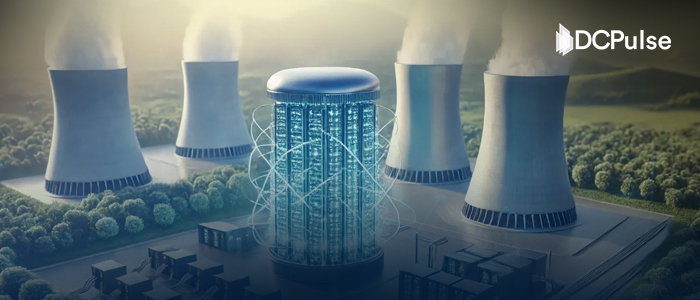
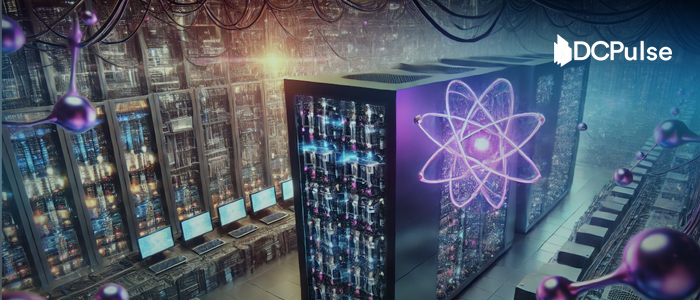
.jpg)